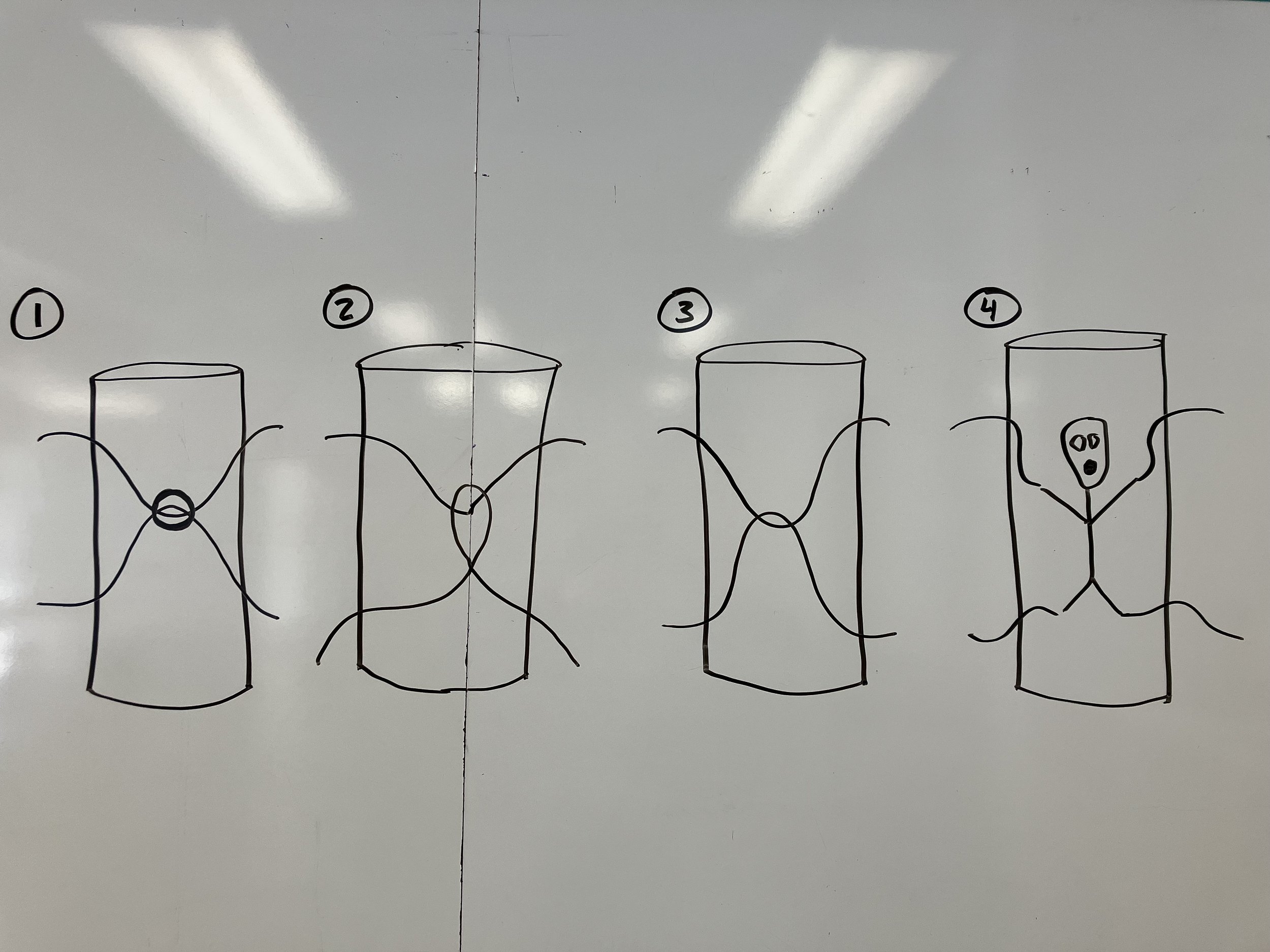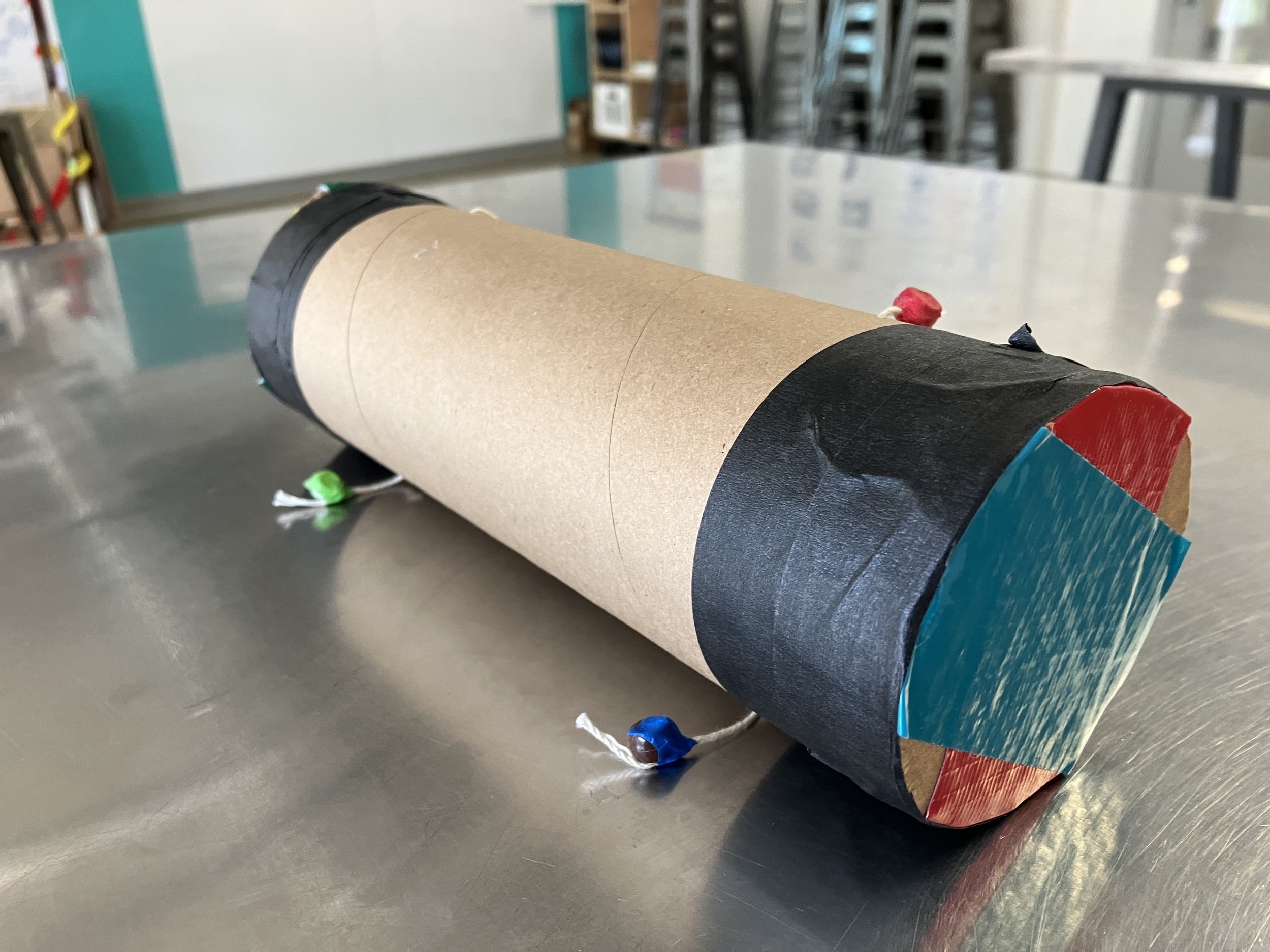Unit Zero: What Do Scientists Do?
One day in September, a perplexing set of objects awaited Violet and Aqua Band learners in Science Block. Simply described, they were cardboard tubes with the ends blocked off by duct tape, and with four strings protruding from small holes in the sides. When learners pulled the four strings, however, surprises ensued. The four strings didn’t react as one might have expected. Inside the tubes, where no one could see it, a mysterious mechanism governed the action of the strings. What was it?
Over the next week or two, the learners investigated, working in small collaborative groups. They turned the tubes over and around. They shook them and listened. They pulled the strings again and again, trying to discern a pattern to the movement. They wrote and drew diagrams in their notebooks. They made models using smaller tubes, tape and string. Most importantly, they conversed – testing, debating and refining ideas through collaborative talk. This work with the mystery tubes represented the final piece of “Unit Zero,” a series of experiences designed to explore the discipline-specific skills, crosscutting concepts, and foundational assumptions essential to the practice of science.
On one of the unit’s final days, the band convened to discuss their findings – about the mystery tubes, but also about how scientists justify their working understandings of phenomena. We’ve all heard the dismissive phrase, “It’s just a theory.” But what do scientists mean when they propose a theory – like the theory of evolution, or relativity? As the band averred, those theories are not just guesses. They’re backed by background knowledge and evidence – lots of it.
In the course of a whole group conversation, members of the band drew a series of diagrams on the board to describe their theories of how the mechanism inside the mystery tubes operates. An idea from early in the unit surfaced: how to deflect explanations that don’t rely on scientific inquiry, like the proposition that, in lieu of a system that obeys known physical laws, the tube might contain some tiny being (an “alien”) that sat inside pulling the strings.
Mr. Cooley probed: “If someone asked you, why do you think it is this [pointing to one of the diagrams of strings looped together and passing through a washer that changes their behavior] and not this [pointing to the drawing of the alien pulling the strings], what would you say?”
“You can’t prove that!” Mahin exclaimed. Other voices chimed in, “No, because….”
Mr. Cooley interjected a clarifying question. “So why would you tell them that they should accept this [pointing to the diagram] and not this [pointing to the alien] – if you can’t see in there anyway?”
Now, Mahin was ready to ground his explanation in scientific terms. “What you observed about the mystery tube leads you to finding out that [pointing to the diagram] and not that [pointing to the alien].”
As Long-View scientists embark on their next investigations, they bring this lived experience of how observation and inference inform the explanations that scientists make.




